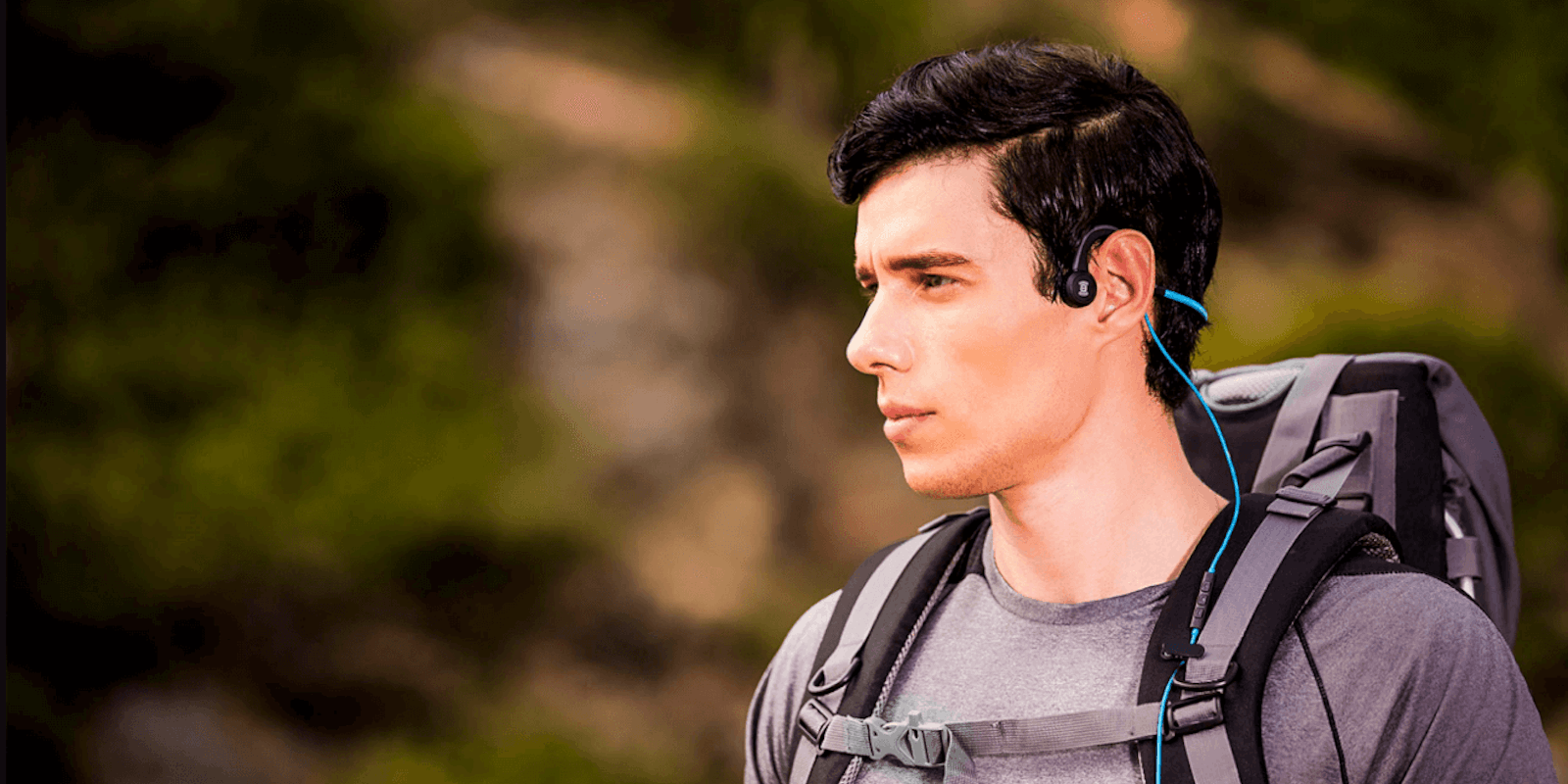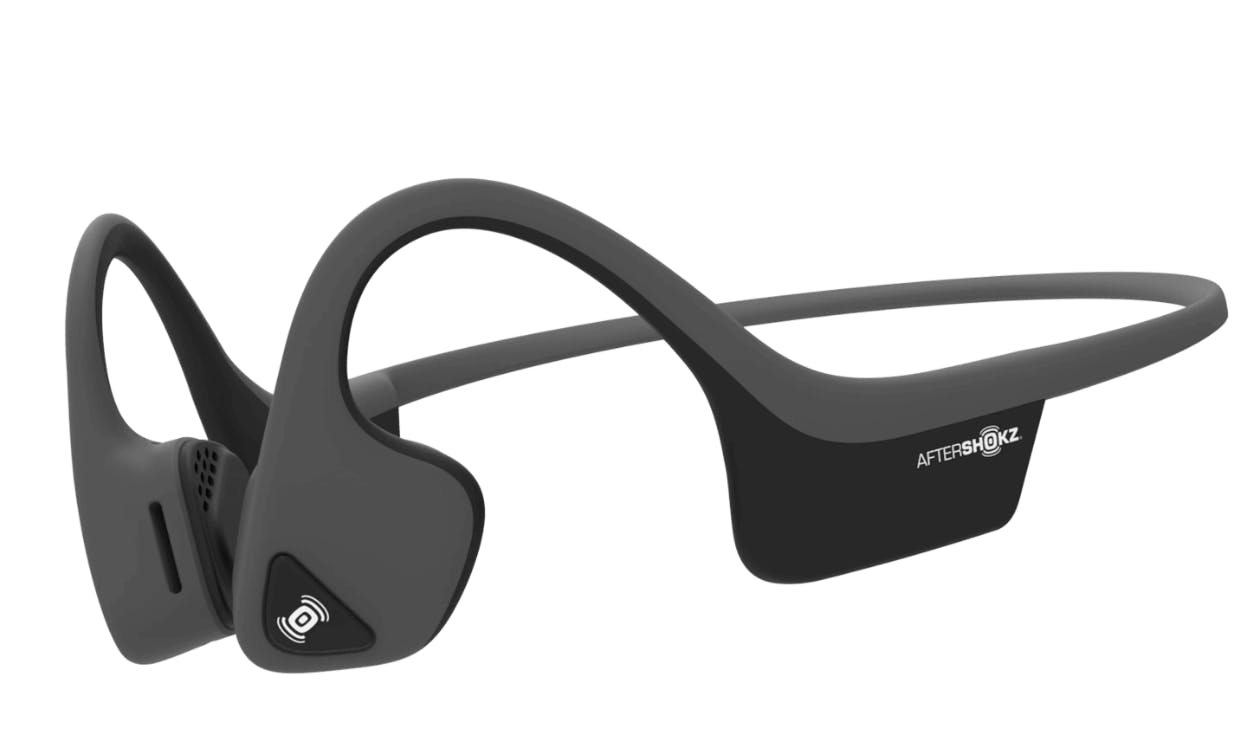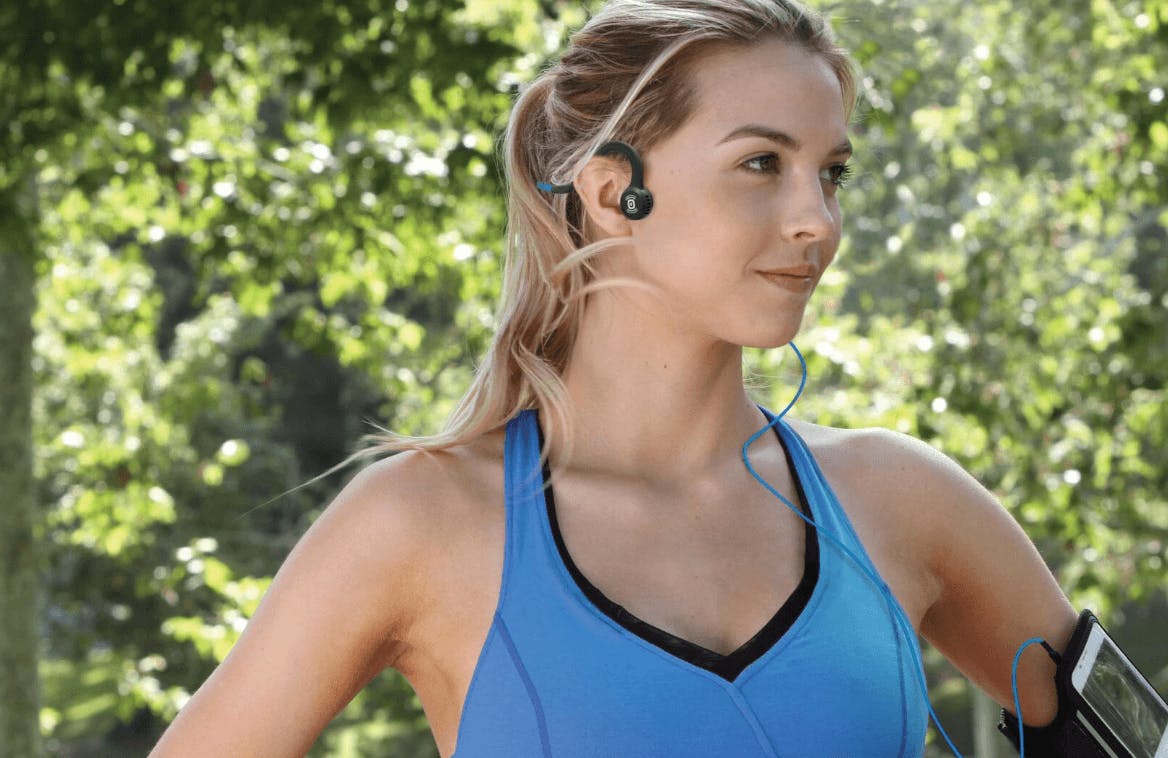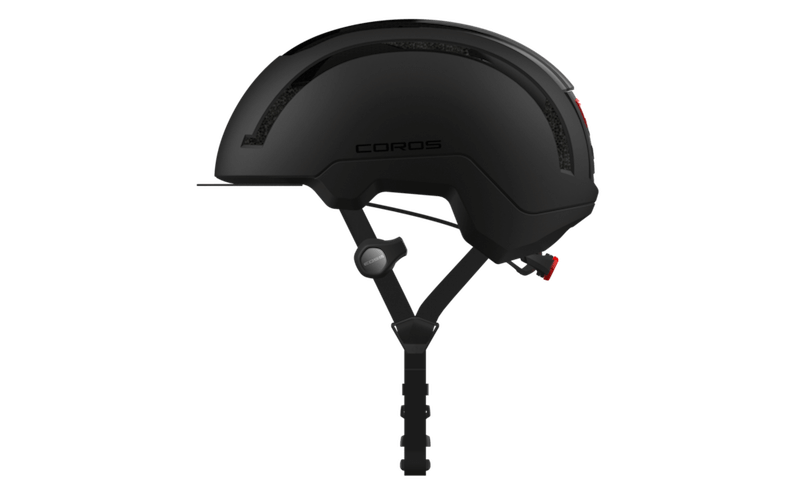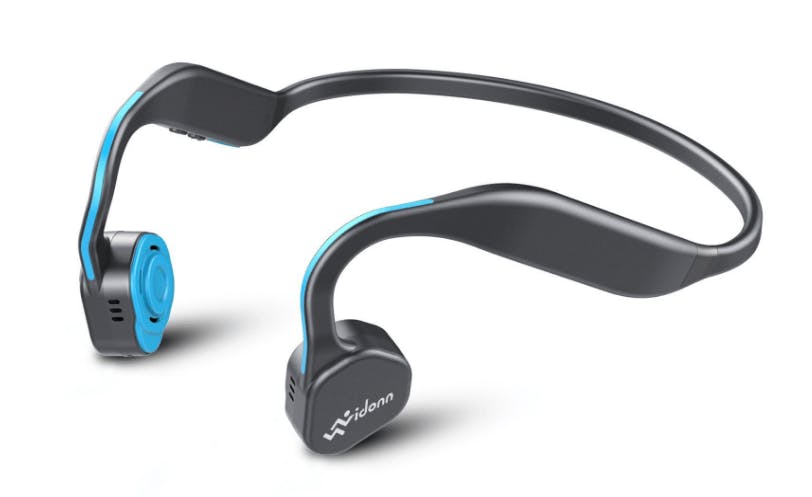Running outdoors or bicycling in traffic isn’t safe to do while wearing headphones — unless your headset allows for ambient noise. Bone conduction headphones do just that. They let you listen to music, podcasts, audiobooks, directions, and phone calls without blocking your ears from other sounds. They do this by sending audio vibrations through the bones in your head, rather than through the air into your ear canal. While bone conduction audio may sound a little crazy, the devices that deliver it look pretty normal.
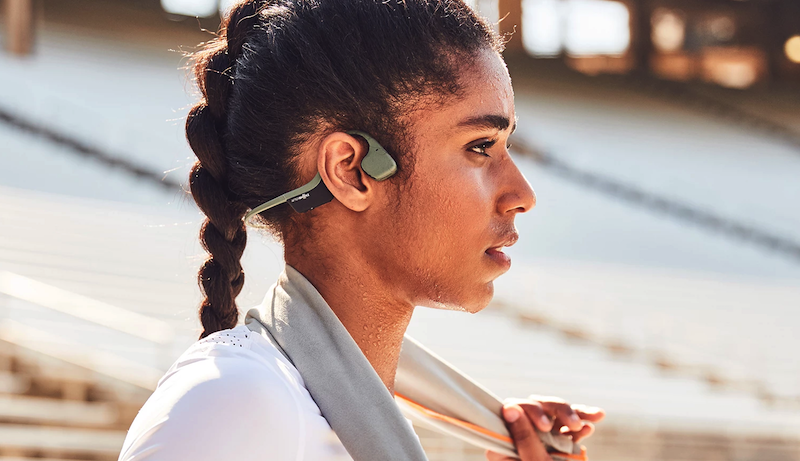
How do bone conduction headphones work?
Sound is vibration. Most headphones deliver sound via miniature speakers placed inside or on top of the ears. Those speakers send audio vibrations through the small space of air in your ear canal to the eardrum. Then you hear “as normal,” which is actually a stunning feat. I’ll summarize info from the University of Maryland Medical System for this next part:
Behind the eardrum are three tiny bones that vibrate. That vibration makes the fluid in the inner ear (aka the cochlea) move, which causes tiny hair cells inside to bend. The cells convert the movement into electrical pulses, which go to the auditory nerve and up to the brain. The brain interprets this as sound.
How is bone conduction audio different? Instead of transmitting sound vibrations via speakers through the air, bone conduction headphones use transducers to send the vibrations through bone. It usually starts in the jaw or cheekbone and ends up in the temporal bone, which surrounds the cochlea. Therefore, the vibrations skip the ear canal and eardrum to go directly to the inner ear.
How does bone conduction audio sound and feel?
By the time the audio reaches the inner ear and continues its journey to the brain, it sounds…normal. If you plug up your ears with your fingers and talk out loud, you’re hearing your own voice almost entirely through bone conduction. With these headphones, you hear the sound from the bone and ambient noises.
When I use bone conduction headphones, the headset must be pressed against my face firmly. If it’s loose, I can’t hear the audio well. Some people report a slight tingling sensation or tickle with certain tones.
The Wikipedia page on bone conduction notes that it generally conveys lower-frequency sounds better than higher frequency sound. In other words, bass doesn’t sound as rich with these headphones as it does on great speakers. But phone calls, podcasts, and other spoken audio will sound fine.
Who are bone conduction headphones for?
Because of the unique way they deliver sound, bone conduction headphones appeal to a few specific types of consumers, including:
- People with certain kinds of hearing impairments (you need at least one working cochlea to use them)
- People with vision impairment who want to listen to their mobile device while maintaining situational audio awareness
- Anyone with difficulty or discomfort with in-ear or over-ear headphones
- Swimmers, hikers, bicyclists, and outdoor/activity enthusiasts
- Anyone who wants to use headphones but also needs to hear what’s happening around them
Bone conduction headphones are not a good choice if you’re looking for superior audio quality. They’re also not good on airplanes, trains, or in other noisy travel environments because they’re the opposite of noise-canceling.
If you are hearing impaired or work in noisy environments and need noise-canceling in addition to clear audio, look into Bose Hearphones ($499.95) instead.
Can passersby hear the audio coming from them?
Yes. Bone conduction headphones are not silent, so people walking by may be able to hear your audio. It depends on how loud your headphones are, what other ambient noises are present, and other factors.
When someone can hear your headphones, it usually sounds tinny and unclear to them. It’s not dissimilar to overhearing someone with cheap over-ear headphones blasting their music at full volume. It might also sound like overhearing someone using their speakerphone in the distance.
If you get bone conduction headphones, be mindful of your volume level in public. You wouldn’t want people to listen to your phone calls. And you don’t want to disturb others. If you buy a pair, ask a friend to wear your bone conduction headphones and listen in at different volumes while you lurk nearby.
Can they damage your hearing?
Yes. Like any other form of audio, bone conduction audio may damage your hearing if you play it too loudly. That said, there isn’t a lot of supporting research on this topic. It’s probably best to protect your hearing by listening only at reasonable volume levels.
How much do bone conduction headphones cost?
Most bone conduction headphones cost around $150 or less. The lowest-priced pair I’ve seen was about $50.
There’s a company called Coros that builds bone conduction audio systems into helmets for outdoor sports, like bicycling. These devices cost between $180 and $220 each (see more below). A few other companies build them into other kinds of equipment, such as ski goggles. Prices for those items will accordingly be higher.
What are some good bone conduction headphones?
If you’re looking to buy a set of bone conduction headphones, the biggest brand name is AfterShokz. That company has a number of models. I’ll list three of them to give you an idea of the range. Coros, the company that embeds the headphones into its helmets, has a few great options for active types. Finally, the Vidonn F1 is a good budget pick.
Here’s a little more information about these products.
AfterShokz
AfterShokz Trekz Air ($119.95; shown above) is the set that will have the broadest appeal. It’s a wireless Bluetooth-enabled set of headphones that’s incredibly lightweight, thanks to extensive use of titanium in the design. They’re sweat-proof and hold a charge for about six hours. They come in four colors: slate grey, forest green, midnight blue, and canyon red.
AfterShokz Xtrainerz ($149.95) are a waterproof pair that you can safely wear while swimming. This more expensive model comes with 4GB of onboard storage for music. That’s about 1,200 songs right in your headset. It isn’t Bluetooth-enabled, however, so while you can listen to any audio files you load on it, you can’t use it for phone calls or real-time from your phone. They come in black and sapphire blue.
Aftershokz Sportz Titanium with Mic ($59.95) is the pair to choose if you prefer a wired headset. This pair has a microphone, so you can use it for calls, audio memos, and voice commands to your mobile device. Even though they’re wired, you still need to charge them. One charge lasts about 12 hours. The earpieces are black, but you have a choice in color for the wire: black, ocean blue, or red.
Coros SafeSound Helmets
Coros makes its SafeSound Helmet with built-in bone conduction headphones in three styles: Urban ($179.99; shown), Road ($199.99), and Mountain ($219.99). There are different color options and sizes depending on what style you choose. The headphone pieces are attached to the straps, which you can adjust to get the right fit. A wind-resistant microphone lets you take calls and use voice commands on your phone. There’s also a remote control you can hook up to your handlebars for pausing, skipping, and volume. When you connect the helmet to the Coros app on your phone, there’s an option to send an emergency text alert to up to three people in your address book if the helmet detects a collision. Now that’s smart.
Vidonn F1
Vidonn F1 ($59) is a good option if you’re looking to spend less than $60 and you want wireless connectivity. This Bluetooth-enabled pair comes in all gray (a very dark gray) or gray with a blue or neon yellow accent. A single charge should last about six hours. They weigh 1.3oz, making them a teensy bit heavier than the AfterShokz Air.
The Daily Dot may receive a payment in connection with purchases of products or services featured in this article. Click here to learn more.

